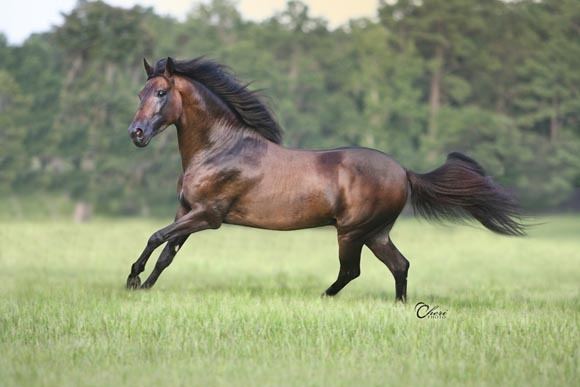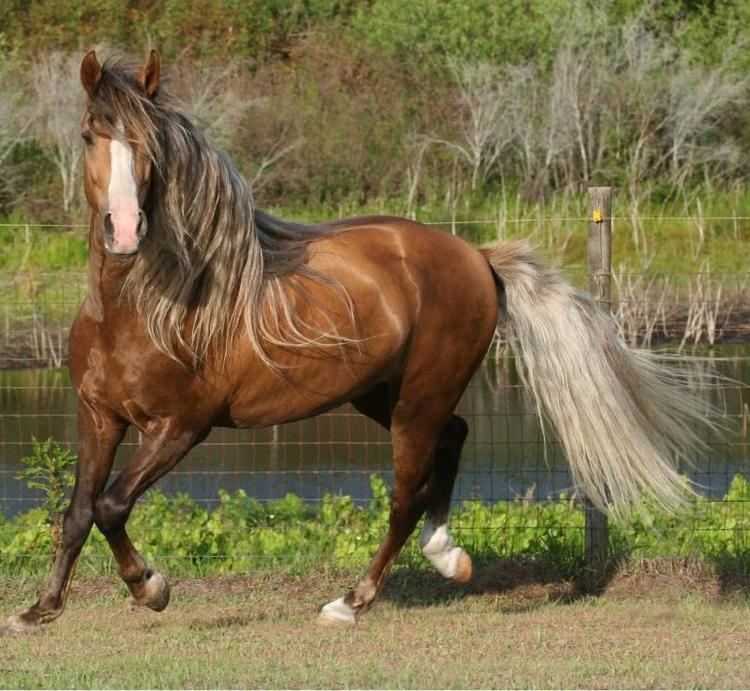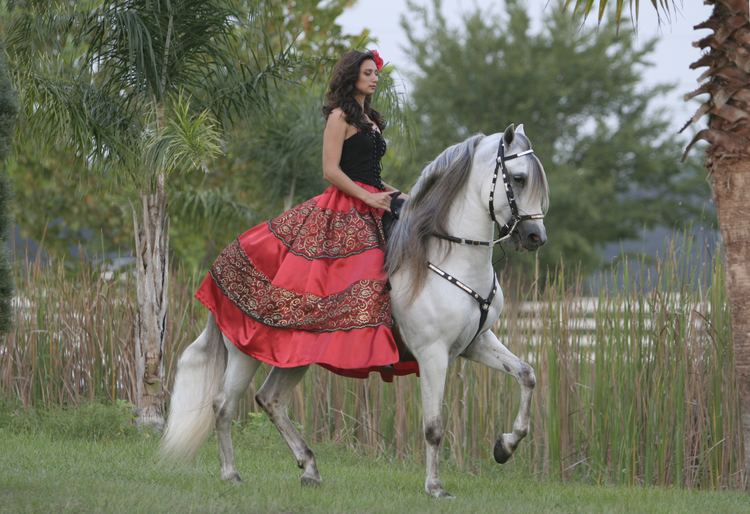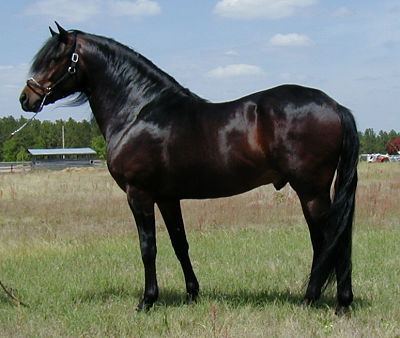Scientific name Equus ferus caballus | Rank Breed | |
 | ||
Other names Pure Puerto Rican Paso FinoColombian Paso FinoColombian Criollo Horse "Paso Fino Form" Similar Peruvian Paso, American Saddlebred, Appaloosa, Criollo horse, Tennessee Walking Horse | ||
Paso fino 2004 national fino stallions
The Paso Fino is a naturally gaited light horse breed dating back to horses imported to the Caribbean from Spain. Pasos are prized for their smooth, natural, four-beat, lateral ambling gait; they are used in many disciplines, but are especially popular for trail riding. In the United States two main groups of horses are popularly called "Paso Fino:" One, also known as the Pure Puerto Rican Paso Fino (PPR), originated in Puerto Rico. The other, often called the Colombian Paso Fino or Colombian Criollo Horse (CCC), developed in Colombia. Though from similar Spanish ancestors, the two groups developed independently of one another in their home nations.
Contents
- Paso fino 2004 national fino stallions
- Laota spring farm paso fino horses for sale breeding training
- History
- Puerto Rican Paso Fino
- Importation and development in the United States
- Characteristics
- Gaits
- Uses
- References

These two groups have been frequently crossbred in the United States and Europe. In recent years, a trend has developed favoring preservation breeding to preserve the undiluted bloodlines of each group.

Laota spring farm paso fino horses for sale breeding training
History

The Paso Fino name means 'fine step'. The Paso Fino is a blend of the Barb, Spanish Jennet, and Andalusian horse and was bred by Spanish land owners in Puerto Rico and Colombia to be used in the plantations because of their endurance and comfortable ride. All Pasos share their heritage with the Peruvian Paso, the American Mustangs, and other descendants of Colonial Spanish Horses. Puerto Rican and Colombian horses, as well as Paso Finos from Cuba and other tropical countries, have been interbred frequently in the United States to produce the modern American Paso Fino show horse.

On the second voyage of Christopher Columbus from Spain to the Americas in 1493, he disembarked with his soldiers, 20 horses and 5 mares on the island of Borinquen at the bay of Aguada (today Añasco), and gave the region the name San Juan Bautista. Soon after, in May 1509, the first governor of the island, Juan Ponce de León, brought horses to Puerto Rico from his hacienda, El Higuey, located on the neighboring island of La Española (now Hispaniola).
Puerto Rican Paso Fino

The Puerto Rican Paso Fino was developed on the Caribbean island of Puerto Rico over a 500-year colonial period. Island geography and the desires of a people for hardy, sure-footed, comfortable horses led to the independent development of the breed. Frenchman Andres Pedro Ledru, in a notation about horse races held on the 17 of July, 1797, wrote that the speed of these indigenous horses was admirable, "they have no trot or gallop, but a type of pace (Andadura). A gait so precipitated that the eye can't follow the movement of the legs." As early as 1849, Paso Fino competitions were held in Puerto Rico, with prizes for winners, for the purpose of improving local horses. In 1882 the first racetrack was built, and in every race meet, there were Paso Fino and Andadura categories.
According to Ramirez de Arellano, when the United States invaded Puerto Rico, the Paso Fino played a first order role in transportation as well as agricultural work. "Manchado," a notable horse of the time owned by Don Nicolás Quiñones Cabezudo of Caguas, was said to be "so fine that it gaited at liberty without its rider in the town square when asked."
In 1927 the most influential sire in the modern Puerto Rican Paso Fino breed, Dulce Sueño, was born in Guayama. In 1943, the Federation of the Sport of Paso Fino Horses of Puerto Rico and a breed registry were established. Copita Don Q, a Dulce Sueño grandson, was the winner of the first annual Federation contest in 1943. In an agricultural almanac published in 1947, Gustavo A Ramirez de Arellano wrote, "at present the descendants of the famous stallion "Dulce Sueño" are the ones who have most obtained titles and trophies from the association of owners of saddle horses."
Importation and development in the United States
The rise of the Paso Fino in the United States began in the 1950s and 1960s. The first Paso Finos in the United States were imported by members of the armed services, who purchased the horses while stationed in Puerto Rico. This stock provided some of the first Paso Finos bred in the United States.
Colombian Pasos came to the United States beginning with a rancher who visited Colombia and purchased quite a number of the horses to work his cattle. He introduced the second strain into the US. While the two strains are still bred individually to retain their purity, they are also crossbred to produce the best of both strains.
Today, the Paso Fino Horse Association (PFHA) oversees and regulates registered Paso Finos in the US. It was founded in 1972 under the name "American Paso Finos", later changing to its current name. It registers and promotes both Puerto Rican and Colombian horses, and under the PFHA, the two groups have been frequently crossbred. As the numbers of Colombian horses have begun to significantly outnumber those of Puerto Rican bloodlines, a trend has developed favoring preservation breeding to preserve the bloodlines of each group.
The American Trote & Trocha Association formed to promote the horses, primarily of Colombian breeding, that perform a diagonal ambling gait known as the "Trocha". The Trocha differs from the classic lateral ambling gait of the Paso Fino.
Characteristics
The Paso Fino has several different body types, from quite small and refined to very large and powerful. The action of the two strains is somewhat different. The Puerto Rican Paso Fino is prized for its fine or delicate step, while the Colombian Paso Fino tends to have more of a rapid, piston-like action.
This is a lively horse that has a natural drive and willingness, known colloquially as "brio", and generally a nice disposition. Paso Finos come in a variety of colors, sizes and body types, but the even four-beat gait and brio are present in all good representatives of the breed. Some lineages of the breed are known to have higher incidence of Degenerative Suspensory Ligament Desmitis (DSLD).
Gaits
The Paso Fino executes a natural evenly spaced four-beat lateral ambling gait, similar to many gaited horses. Both the Colombian and the Puerto Rican strains of the Paso Fino execute the lateral gait naturally, without the aid of training devices.
The Paso Fino's gaits are performed at varied levels of extension in stride. All four hooves travel close to the ground while in motion and are lifted equally in height as the horse covers ground. At whatever speed the horse travels, the smoothness of the gait ideally allows the rider to appear motionless with little up and down movement.
Only a few Paso Finos can perform a true classic fino, but the majority perform the other gaits with ease. The correctness of the gait is very important by today's standards, therefore horses with a very even four-beat gait are much preferred for professional breeding.
In Colombia, some related native horses perform a slightly different, unevenly timed diagonal four-beat gait, known as the trocha, which is similar to the fox trot, and very smooth. While some Paso Finos will perform the trocha, it is discouraged and considered a fault in the purebred Paso Fino. In Colombia the "trocha" has evolved, becoming a separate genealogical line. It is inherited in a manner similar to the lateral ambling gaits of the purebred Paso Fino. Trocha rivals in popularity with paso fino in Colombia, but crossbreeding is now avoided. Another Colombian breed performs what is known as trote y galope. The trote y galope horses perform an exaggerated diagonal two-beat trot and a very collected canter, but they do share some common heritage with the Paso Fino. Not as well known as Paso Fino, these variants are just beginning to be recognized in the United States.
Uses
Paso Finos are versatile and are used in many disciplines. They are often seen competing in Western classes such as trail, barrel racing, versatility and team penning, and are also commonly used for trail riding and endurance competitions, driving and gymkhana.
